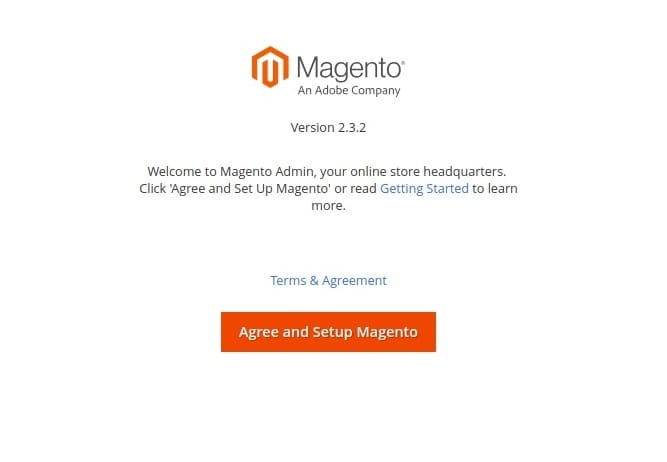
In this tutorial, we will show you how to install Magento on CentOS 8. For those of you who didn’t know, Magento is one of the world’s most widely used applications for managing E-Commerce sites. Magento is fully customizable to meet the user’s requirements and allows them to create and launch a fully functional online store in minutes. Magento employs the MySQL relational database management system, the PHP programming language, and elements of the Zend Framework.
This article assumes you have at least basic knowledge of Linux, know how to use the shell, and most importantly, you host your site on your own VPS. The installation is quite simple and assumes you are running in the root account, if not you may need to add ‘sudo‘ to the commands to get root privileges. I will show you through the step-by-step installation of Magento on a CentOS 8.
Prerequisites
- A server running one of the following operating systems: CentOS 8.
- It’s recommended that you use a fresh OS install to prevent any potential issues.
- A
non-root sudo useror access to theroot user. We recommend acting as anon-root sudo user, however, as you can harm your system if you’re not careful when acting as the root.
Install Magento on CentOS 8
Step 1. First, let’s start by ensuring your system is up-to-date.
sudo dnf clean all sudo dnf update
Step 2. Install LAMP server.
A CentOS 8 LAMP server is required. If you do not have LAMP installed, you can follow our guide here.
Step 3. Installing Composer.
Composer is a dependency manager for PHP that Magento uses to download all the components for Magento. You can install Composer with the following command:
curl -sS https://getcomposer.org/installer | php mv composer.phar /usr/local/bin/composer
Step 4. Download and install Magento on CentOS 8.
First, download the latest version of Magento from the Git repository using the following command:
cd /var/www/html wget https://github.com/magento/magento2/archive/2.3.zip
Unzip the Magento archive to the document root directory on your server:
unzip 2.3.zip mv magento2-2.3 magento2
Next, change the directory to magento2 and install all Magento dependencies with the following command:
cd /var/www/html/magento2 composer update composer install
After that, create the Magento crontab to schedule tasks:
./bin/magento cron:install
Step 5. Configuring MariaDB for Magento.
By default, MariaDB is not hardened. You can secure MariaDB using the mysql_secure_installation script. you should read and below each step carefully which will set a root password, remove anonymous users, disallow remote root login, and remove the test database and access to secure MariaDB:
mysql_secure_installation
Configure it like this:
- Set root password? [Y/n] y - Remove anonymous users? [Y/n] y - Disallow root login remotely? [Y/n] y - Remove test database and access to it? [Y/n] y - Reload privilege tables now? [Y/n] y
Next, we will need to log in to the MariaDB console and create a database for the Magento. Run the following command:
mysql -u root -p
This will prompt you for a password, so enter your MariaDB root password and hit Enter. Once you are logged in to your database server you need to create a database for Magento installation:
MariaDB [(none)]> CREATE DATABASE magentodb; MariaDB [(none)]> GRANT ALL ON magentodb.* TO magento@localhost IDENTIFIED BY 'your-password'; MariaDB [(none)]> flush privileges; MariaDB [(none)]> exit;
Step 6. Configuring Apache for Magento.
Now we create an Apache virtual host configuration file for Magento with the following command:
nano /etc/httpd/conf.d/magento.conf
Add the following lines:
<VirtualHost *:80> ServerAdmin admin@example.com ServerName example.com DocumentRoot /var/www/html/magento2/ DirectoryIndex index.php <Directory /var/www/html/magento2/> Options Indexes FollowSymLinks MultiViews AllowOverride All Order allow,deny allow from all </Directory> ErrorLog /var/log/httpd/magento_error.log CustomLog /var/log/httpd/magento_access.log combined </VirtualHost>
Save and close the file. Restart the apache service for the changes to take effect:
systemctl restart httpd.service
Step 7. Install an SSL certificate.
First, download the required packages and create a new system binary:
wget https://dl.eff.org/certbot-auto sudo mv certbot-auto /usr/local/bin/certbot-auto sudo chown root /usr/local/bin/certbot-auto sudo chmod 0755 /usr/local/bin/certbot-auto
Next, run the certbot command that will download and install all of its dependencies:
sudo /usr/local/bin/certbot-auto --apache
Step 8. Accessing Magento e-commerce.
Magento will be available on HTTP port 80 by default. Open your favorite browser and navigate to https://your-domain.com/ or https://server-ip-address and complete the required steps to finish the installation. If you are using a firewall, please open port 80 to enable access to the control panel.

Congratulations! You have successfully installed Magento. Thanks for using this tutorial for installing Magento eCommerce on your CentOS 8 system. For additional help or useful information, we recommend you to check the official Magento website.